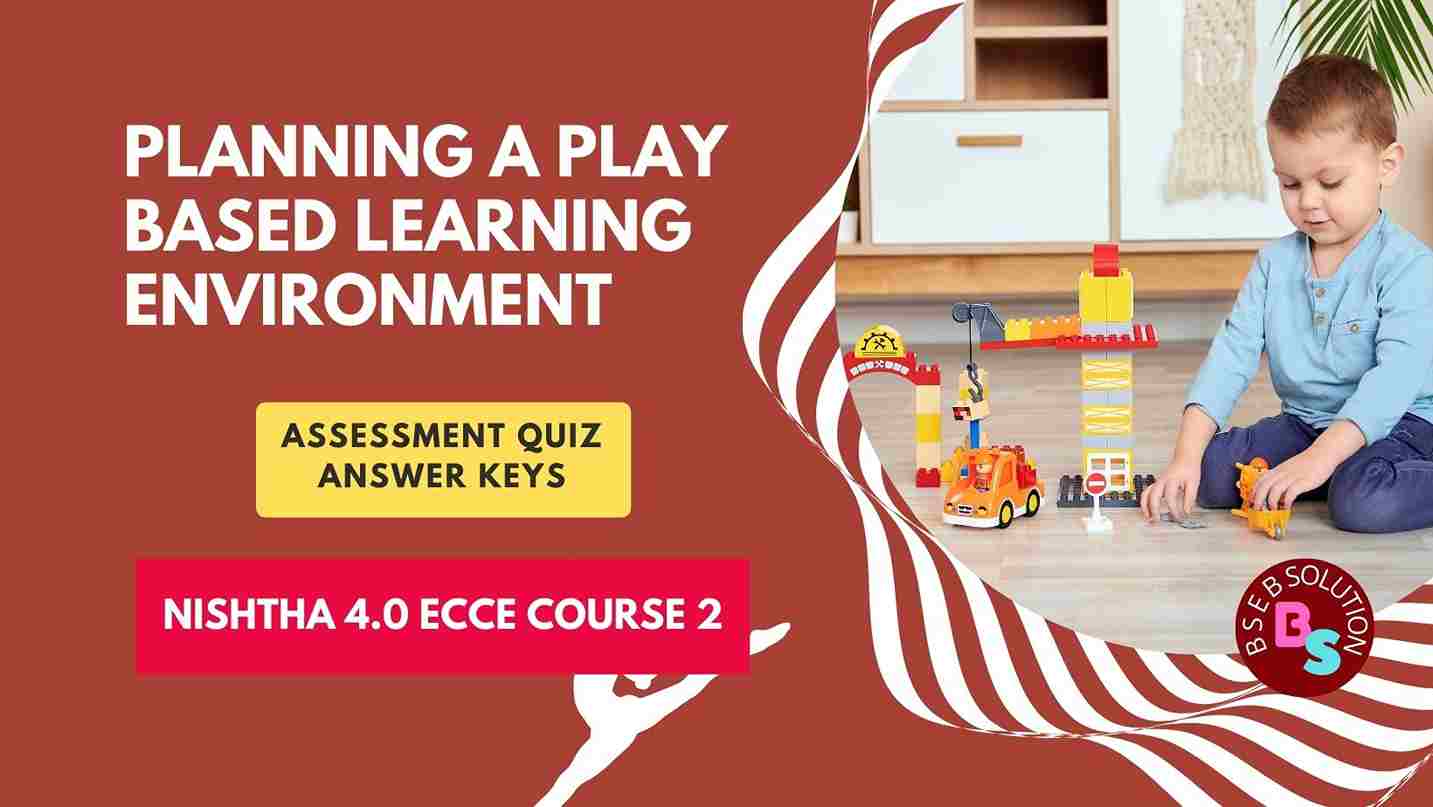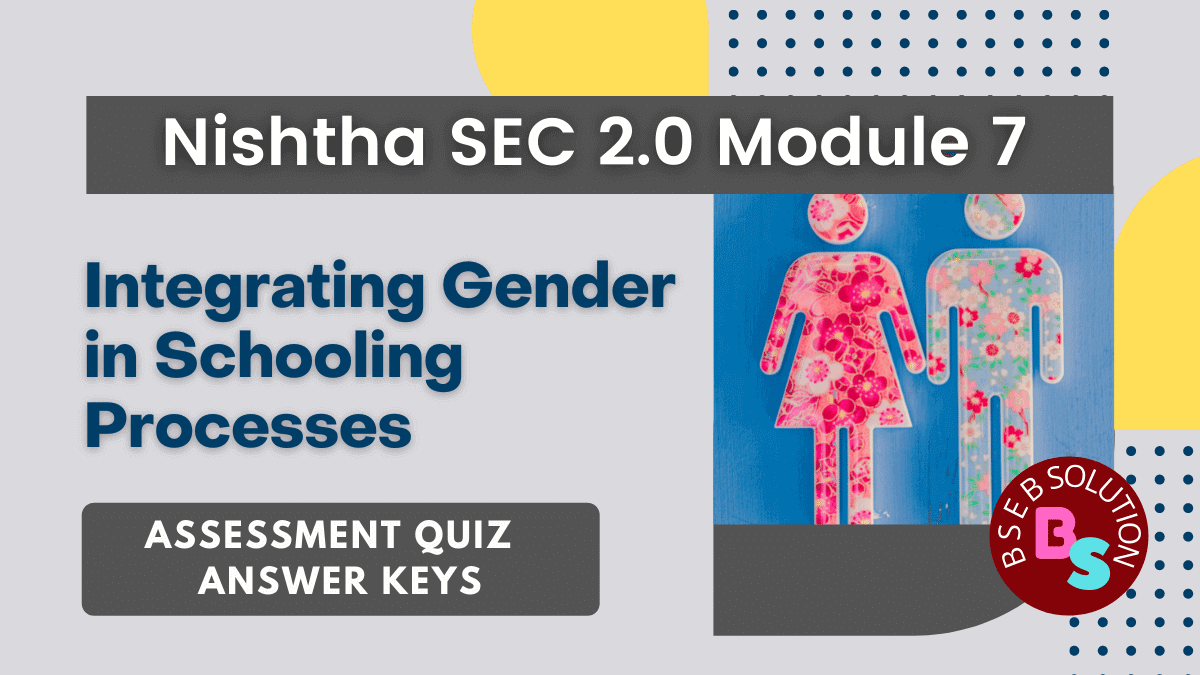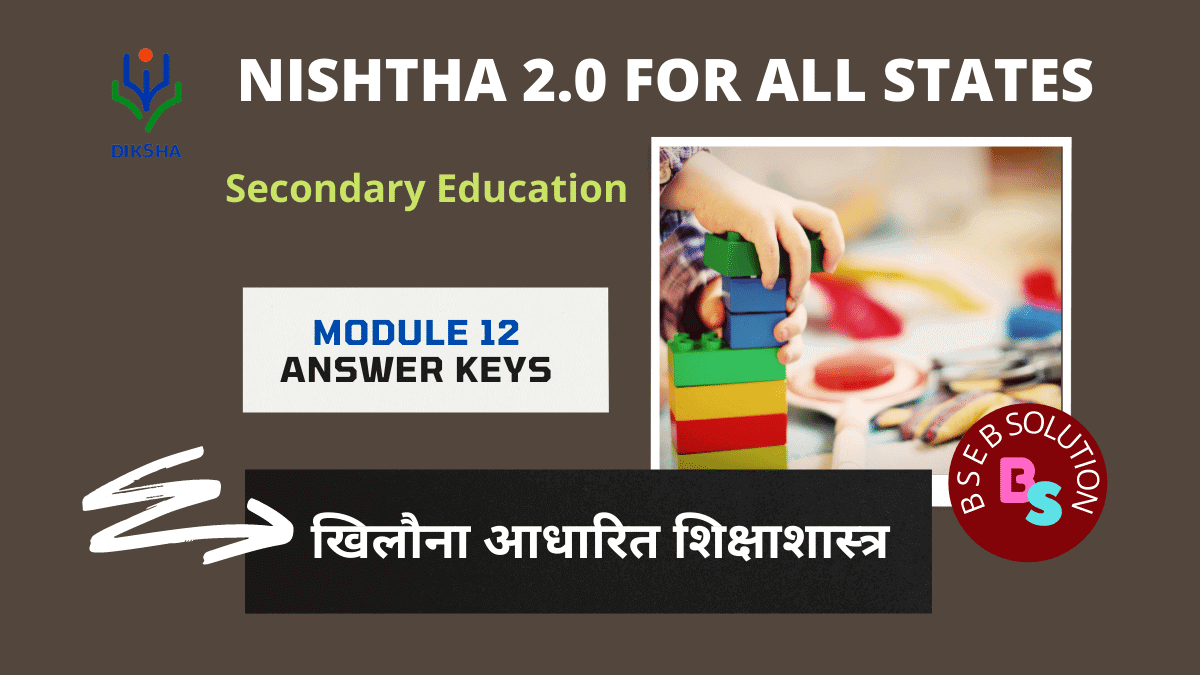This course provides an overview on planning for a learning environment and quality ECE programme in preschools/ anganwadis. This would help the learner to design a play-based learning environment and also devise the play based experiences for all the young children. In this post you will be able to know “Planning a play-based learning Environment” AR, UP, UK, MZ, NL, OD, PB, AP, AS, BH, GJ, HR, HP, JK, JH, KA, MP, CHD, CG, DL, GA, MH, CBSE, KVS, NVS, MN, ML, RJ, SK, TS, TR, Nishtha 4.0 ECCE course 2 Quiz question and Answer Key PDF in English. If you want this questionnaire in Hindi, click here.
“Planning a play-based learning Environment” ECCE Nishtha 4.0 Course 2 Answer Key
The assessment questionnaire of Nishtha SEC 2.0, FLN 3.0 and ECCE 4.0 training is the same in all states, but the Training Links are different. Out of around 35 questions, you will get only 20 random questions in an attempt. You will be able to get the certificate by scoring 70% marks in maximum three attempts.
All the Nishtha trainings available on Diksha App are design to improve teacher performance. So, take all the training seriously and solve the assessment quiz at the end. Certificate will issue only after securing 70% marks in the evaluation quiz. If you face any kind of problem in solving Nishtha 4.0 ECCE course Module 2 Quiz answer key, then get complete solution here.
ECCE Nishtha 4.0 Course 2 Answer Key
Q. Which language is initially considered essential for the children to be proficient?
i. English
ii. mother tongue (✓)
iii. all the languages
iv. regional language
Q. Why are child-initiated activities important?
i. to pursue anganwadi workers work
ii. to pursue activities of other
iii. to pursue activities of their choice (✓)
iv. to pursue neighbour’s works
Q. What is the other name of the reading area in an Anganwadi?
i. manipulative area (✓)
ii. circle time area
iii. language and literacy
iv. area music
Q. While looking at the child when she or he is involved in activities the Anganwadi worker can get information about the following?
i. how the parents are contributing in their child’s learning (✓)
ii. which learning outcome the child progressing in
iii. at what time the child come to the Anganwadi Daily
iv. weather the child is responsible for her his one belongings
Q. Which behaviour among the following will not help children through a balance between group and individual activities?
i. fighting with each other (✓)
ii. Cordailly working in group
iii. collaboration
iv. Waiting for their turn
Q. Which factor must be considered before preparing and activity?
i. attention span of the child (✓)
ii. cast of the child
iii. economic background the child
iv. gender of the child
Q. Which of the following is an example for assessing print Awareness of children under Foundational literacy?
i. sharing ideas during circle time
ii. fixing 5-6 price puzzles
iii. reading the cover of a story book (✓)
iv. throwing littre in the dustbin
Q. Where should young children spend most of their time besides their home?
i. mobile phones
ii. vibrant preschooler Anganwadi (✓)
iii. playground
iv. talking to other children
Q. Which of the following is not a part of circle time area activity?
i. story telling
ii. music
iii. indoor moment game
iv. sketching (✓)
Q. Why the selection of developmentally appropriate toys and materials consider very important?
i. it is easy for the children to play
ii. it cases less work for the Anganwadi worker
iii. it is acceptable to parents
iv. it make the environment interesting for children to explore (✓)
Q. Which among the following come under Indoore environment?
i. interest area (✓)
ii. a space to sleep
iii. send pit
iv. garden area
Q. The indoor space can be divided into activity area with an appropriate arrangement of ——.
i. open shelves and child friendly furniture (✓)
ii. digging and planting equipments
iii. gardening area
iv. play equipment
Q. Which is skills do children use while they are playing outside and enjoying teacher guided and child in initiated play?
i. gross motor skills (✓)
ii. gaming skills
iii. reading skills
iv. Technology skills
Q. What is the maximum time they should we giving to the children daily for free and guided outdoor play activities?
i. 10 minutes
ii. 60 minutes
iii. 20 minutes
iv. 30 minutes (✓)
Q. The long-term plans programming for ECE are generally development for a —– academic calendar.
i. monthly
ii. yearly (✓)
iii. weekly
iv. daily
Q. Which is the correct statement for a bill designed physical setting of the anganbadi?
i. The physical fitting must be safe secure agency comfortable attractive, and Bell designed to help the Anganwadi children to get engaged in the teacher guided activity is and learn nicely.
ii. physical setting must be safe secure hygienic comfortable attractive and well designed to help the Anganwadi children to get engaged in the teacher activities and learn nicely.
iii. the physical setting must be safe secure hygiene comfortable attractive and well designed to help the Anganwadi children to get engaged in play-based activity and learn happily. (✓)
iv. physical setting must be safe secure hygienic comfortable activity and well designs to help
Q. Which among the following is not suggested for activity interest area for free small group play?
i. language literacy
ii. mobile phone (✓)
iii. manipulative
iv. doll dermatic play
Q. Stimuli from which environment in fluence children’s physical cognitive social and emotional development and learning?
i. sport environment
ii. travel environment p
iii. Preschool environment (✓)
iv. digital environment
Q. Activities in the art area help children to exercise final motor muscles of the finger And the hand and also prepare them for ——–
i. music skills
ii. speaking skills
iii. numeracy skills
iv. writing skills (✓)
We hope that you have found the answer key for Nishtha 4.0 ECCE course Module 2 ‘Planning a play-based learning Environment’ Quiz, which helped you. Read the solutions of the quiz for modules other than “Planning a play-based learning Environment” Nishtha ECCE course Module 2 Answer Key by clicking the button below.







